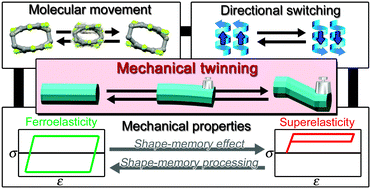Mechanical twinning in organic crystals
Abstract
Mechanical twinning, which enables crystalline solids to deform reversibly beyond their elastic limit, has been getting much attention in recent progressive studies on flexible organic crystals. In addition to the deformability, organic single crystals can obtain new functionalities or directions of their functions with anisotropy can be controlled based on mechanical twinning. Owing to these features, mechanical twinning will be one of the key mechanisms in developing the next-generation flexible organic crystalline materials. This highlight describes recent advances in mechanical twinning in organic crystals to help clarify the potential and challenges faced for future developments. For this purpose, the areas of focus are the molecular mechanisms and functions in addition to qualitative and quantitative aspects of the deformability.

- This article is part of the themed collection: 2022 Highlight article collection


 Please wait while we load your content...
Please wait while we load your content...